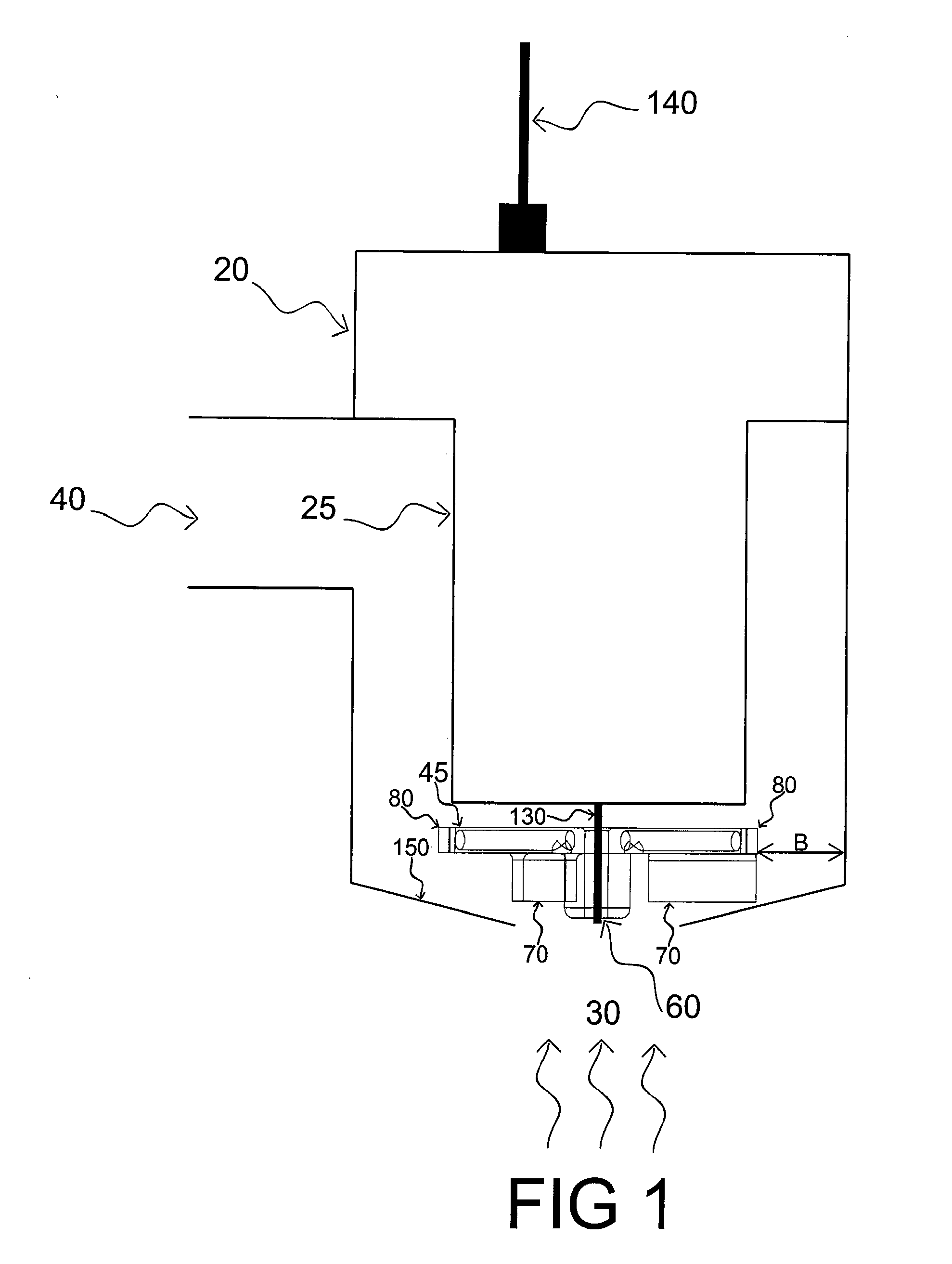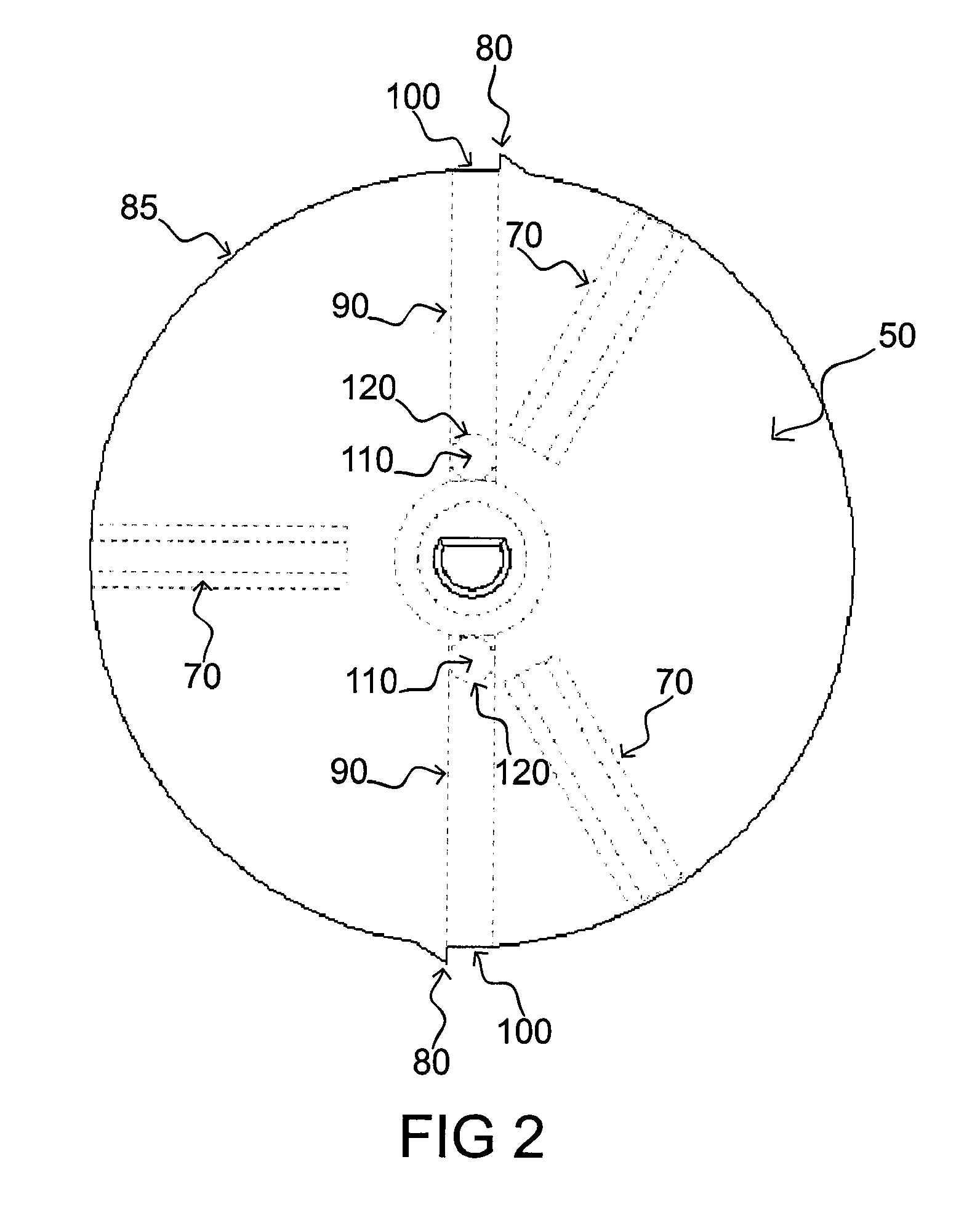Impeller with Anti-vapor lock mechanism
- Summary
- Abstract
- Description
- Claims
- Application Information
AI Technical Summary
Benefits of technology
Problems solved by technology
Method used
Image
Examples
Embodiment Construction
[0057]The present invention is directed to a pump for pumping water, sewage, or other liquid material from one location to another. The pump includes an impeller, or impeller that is rotated in moderately close proximity to a stationary plate or stator. The stationary plate has a central, coaxial inlet through which liquid passes, and is thereafter conveyed by centrifugal force along the impeller-plate spacing to an outlet at the periphery of the impeller and the plate.
[0058]The pump may be any conventionally available pump such as centrifugal pump, an impeller pump, or a mixed flow. Preferably, the pump is a centrifugal pump, such as a centrifugal rotary bilge pump that is well known in the art.
[0059]Centrifugal pumps are classified into three categories—submersible, dewatering and trash.
[0060]Submersible pumps offer contractors versatility on the job site. These pumps are, by definition, submersible in water containing solids up to one-quarter inch in diameter and less than 10 per...
PUM
 Login to View More
Login to View More Abstract
Description
Claims
Application Information
 Login to View More
Login to View More - R&D
- Intellectual Property
- Life Sciences
- Materials
- Tech Scout
- Unparalleled Data Quality
- Higher Quality Content
- 60% Fewer Hallucinations
Browse by: Latest US Patents, China's latest patents, Technical Efficacy Thesaurus, Application Domain, Technology Topic, Popular Technical Reports.
© 2025 PatSnap. All rights reserved.Legal|Privacy policy|Modern Slavery Act Transparency Statement|Sitemap|About US| Contact US: help@patsnap.com



